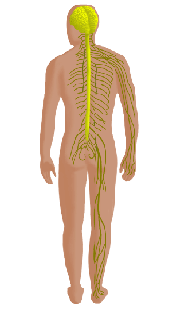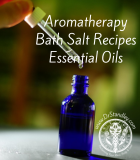
|
|
|
 |
|

The Central Nervous System (CNS) is exactly what the name implies. It is the "absolute" central - nervous - system. All of the other nerves that feed off the central - nervous - system are peripheral nerves. These peripheral nerves are part of the peripheral nervous system (PNS). For the purpose of this site, I have separated the the Central Nervous System from the Peripheral Nervous System. The Central Nervous System is composed of the brain and spinal cord, along with their nerves and end organs (the end of nerves) that control voluntary and involuntary acts. In other words, those physical body processes that you do on your own (moving your arm) and those you do without having to tell your body to do it (like breathing). The parts of the brain governing consciousness and mental activities are; parts of the brain, spinal cord, and their sensory and motor nerve fibers controlling skeletal muscles; and end organs of the body wall. Your CNS is the Master Control Center, the CEO, the Commander in Chief, the Big Kuhuna, The Master Communicator and the Grand Pooh-Bah all rolled into one! THE BRAIN: The brain is a large soft mass of nerve tissue that is contained inside a vault of bone called the cranium. It is the cranial portion of the CNS. The brain is also called the "encephalon." The brain is composed of neurons (nerve cells) and neuroglia (supporting nerve cells). The brain consists of gray and white matter. The gray matter is nervous tissues of a grayish color that forms an "H" shaped structure and is surrounded by white matter. The human brain has more than 10 billion nerve cells and over 50 billion other cells and now weighs on an average of 3 1/8 pounds, where it used to weigh less than 3 pounds. The brain monitors and regulates your unconscious bodily functions like breathing and heart rate, and coordinates most of your voluntary movement. It is also the area of consciousness, thought and creativity!
Different areas of your brain perform different functions:
The central nervous system, gives rise to the peripheral nervous system (the nerves on the periphery of the body). The the autonomic nervous system (ANS) is under control of central nervous system and is also part of the peripheral nervous system, although these nerves stay within the body and effect organs and soft tissues and do not leave to effect appendages (arms and legs). The autonomic nervous system (ANS) is "automatic" and in control of involuntary bodily functions and it is divided into two parts: The sympathetic and parasympathetic nervous system. It regulates the function of glands, the adrenal medulla, smooth muscle tissue, organs and the heart.  THE SPINAL CORD: The spinal cord is an ovoid column of nervous tissue that averages about 44 cm in length when it is flattened out. The spinal cord extends from the medulla oblongata in the brain stem to the 2nd lumbar vertebra in the spinal canal. All of the nerves in your arms, legs and trunk originate from the spinal cord. The spinal cord is the center of reflexive action. When you are stimulated in any way, shape or form, there is a reflex arc that goes from the peripheral nerve to the spinal cord, up to the brain and back down to relay the action. That's some pretty quick service from your CNS. Especially when you just about drop something and catch it quickly or if you are Andy Roddick hitting a 150 mph tennis ball at the 2004 Davis Cup. The spinal cord is housed in a vertebral (bony) vault for its own protection. The spinal cord travels down through a hole in each vertebrae. If you were to see the spinal cord in a cross-section, you would notice that it does not fill the vertebral space in the vertebral column, it is surrounded by other tissue (pia mater), cerebrospinal fluid (CSF), another tissue (arachnoid mater), and still another tissue (dura mater). The three types of mater are called the meninges. The meninges also surround the brain. Hence the word "meningitis" when there is an inflammation of the meninges or membranes of the spinal cord or brain. Cerebrospinal fluid (CSF) when normal contains 50 - 75 mg of sugar per 100 ml. The sugar content is lower than that of blood. The CSF is a water cushion protecting the brain and spinal cord from physical impact. The "H" shape from the gray matter inside the white matter in the brain is carried through the spinal cord as well because they are attached to one another. The anterior "horn" of the "H" is composed of motor cells from the fibers that make up the motor portions of the peripheral nerves. The sensory neurons enter the posterior "horn" of the "H." Incidentally, the "H" does not mean "horn" although the "H" formation does represent the anterior and posterior sides at which the nerves enter. DISCLAIMER **This web site's goal is to provide you with information that may be useful in attaining optimal health. Nothing in it is meant as a prescription or as medical advice. You should check with your physician before implementing any changes in your exercise or lifestyle habits, especially if you have physical problems or are taking medications of any kind. |
| 314.420.5099 |
| Questions regarding this site: webmaster@drstandley.com |
| Copyright 1999-2025: Dr. Loretta J. Standley - All Rights Reserved. |
































